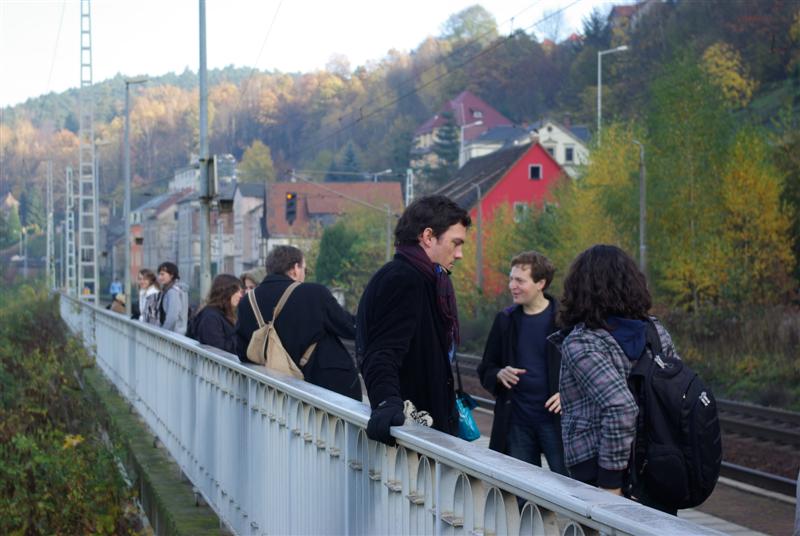The end of the first month at ECLA was marked by the group trip to Dresden and the beautiful region of Sächsische Schweiz, where the Elbe seems almost ubiquitous. At least, this image persists strongly from the trip, mostly because it was the conquest of physical striving. By leaving Berlin on Friday, ECLA students and faculty said goodbye to the urban scenery for the first part of the weekend, and set up for a closer encounter with natural scenery, trains, trekking and magnificent views. We were comfortably hosted in a small hostel in Radebeul-Weintraube, and engaged in the first ascent of the wine hills to capture the view for the first time. This small town, at the outskirts of Dresden lies on the Saxony Wine Road and has been well-known for its vineyards ever since the beginning of the fourteenth century. Having just stepped out of the train, we were welcomed by what it seemed to be an ancient toy-model of the same means of transportation, running fast and loud through the city. None of us was courageous enough to step in for a ride, but contented with taking pictures of this train making its way to the Baroque castle of Moritzburg on a narrow gauge railway.
Ex post, we can testify that the city of Meissen should not be missed during one’s stay in Saxony, first of all because of the enchantment which the narrow cobblestone streets and the Medieval and Renaissance architecture produce in each visitor. We just had to climb up winding streets, to find and enter the Meissen Cathedral, one of the smallest in Europe, but also one of the most representatives for the Gothic style. The evening was dedicated to dining together, and small-scale celebration of Halloween, as a remembrance of which, we kept the pumpkin students so artistically carved.
Saturday was all about climbing, with the luck of good weather on our side. Thus, first objective conquered- the Königstein fortress, one of the biggest in Europe, also called the “Saxon Bastille”, on account of its prison and refuge roles throughout history. It took a heartening upwards walk through the forest to reach it, but the effort just augmented the wonder at the sight of the 750 year-old walls, which defended elegant gardens and buildings inviting to leisure. What followed was the ascent of the Bastei, one of the main outdoor attractions in the region, which is said to have inspired landscapes by Kaspar David Friedrich. Nature competed with human ingenuity for our attention in this case too, because at the top of the massif we crossed the 76 meters-long solid bridge know as Basteibrücke in order to see a new turn of the Elbe. Despite its unbeatable image, the bridge collapsed under attacks during the 30-Year War, and was much later reconstructed in several episodes, up to the present version which dates from the 1850s, and stands at 165 meters above the valley.
The evening made the passage from the silence of the day’s wanderings to the cheerfulness of spending time together in a historical restaurant which carefully conserved its brewery aspect, but blended it with the luxury of a ball house. Later on, some took to explore a bit of Dresden by night, and bravely face the traps and trials of public transportation back to Radebeul.
The culmination of the trip involved a few impressive sights of Dresden by day, a ground level view-for a change- of the Elbe, and the museum tour of the Old Master’s Picture Gallery, where unsurprisingly, the Sistine Madonna captured most of our interest, making the struggle with time bitterer.
By Brindusa Birhala (2009, Romania)

